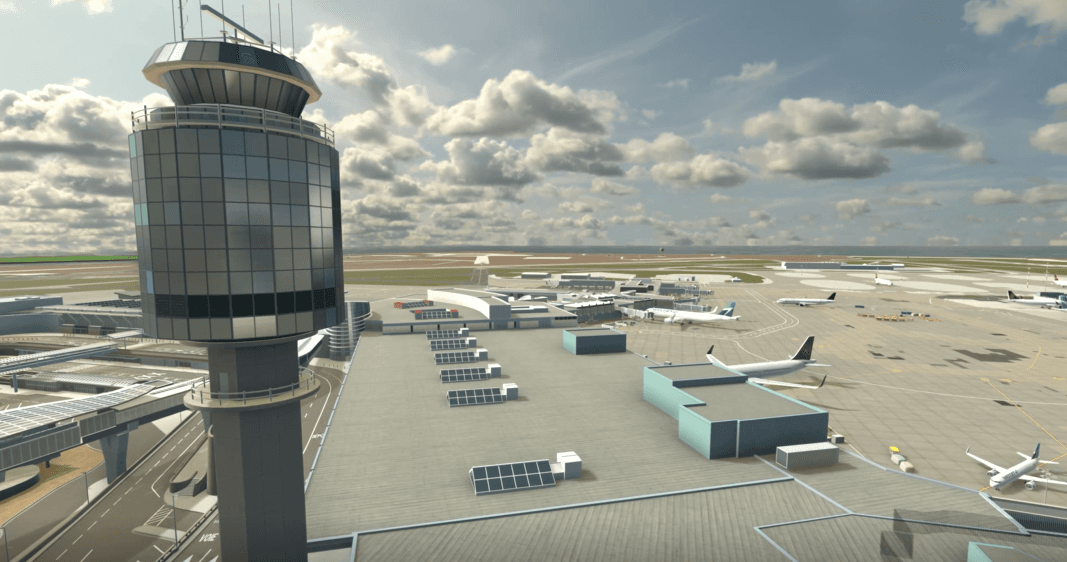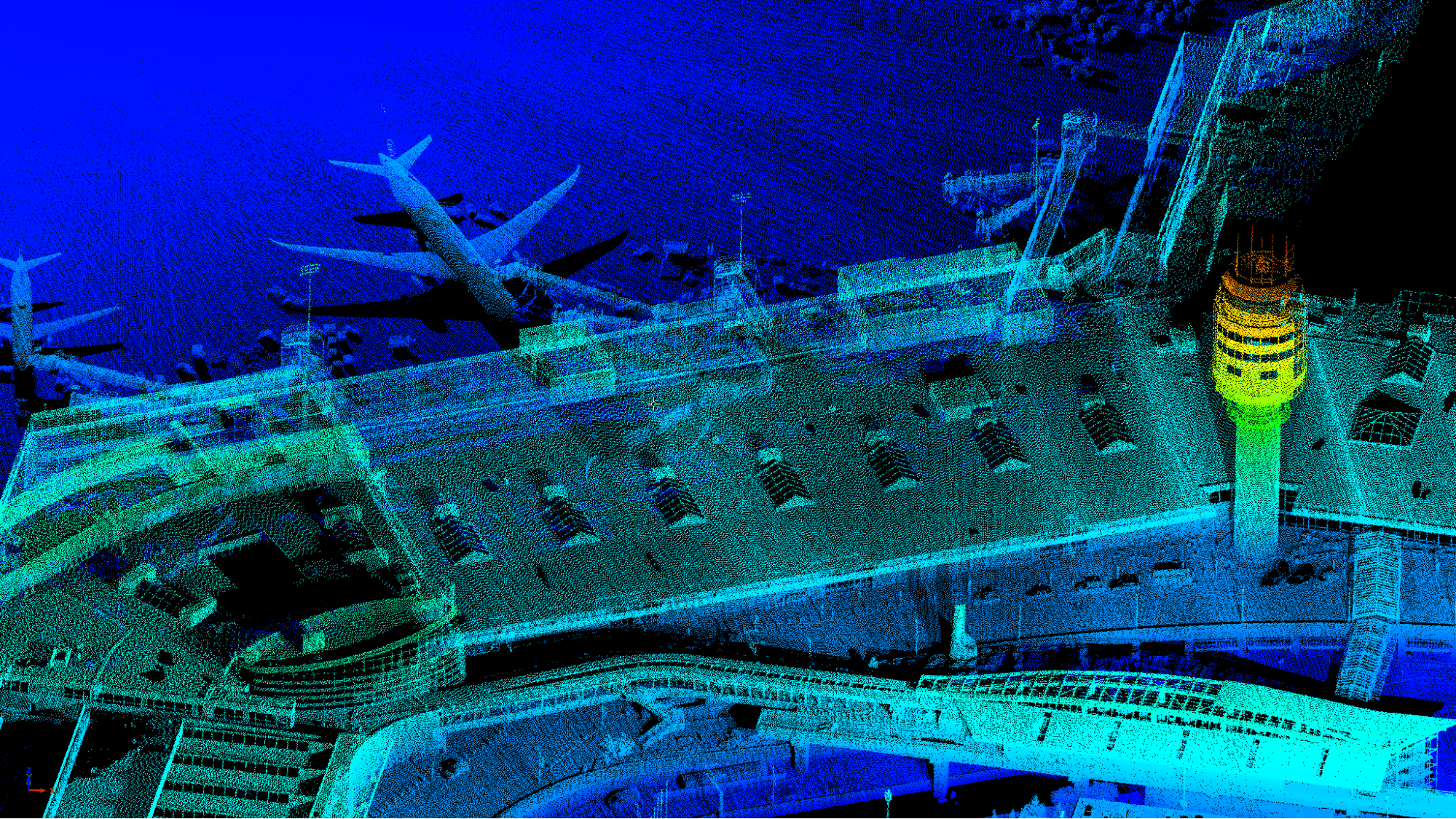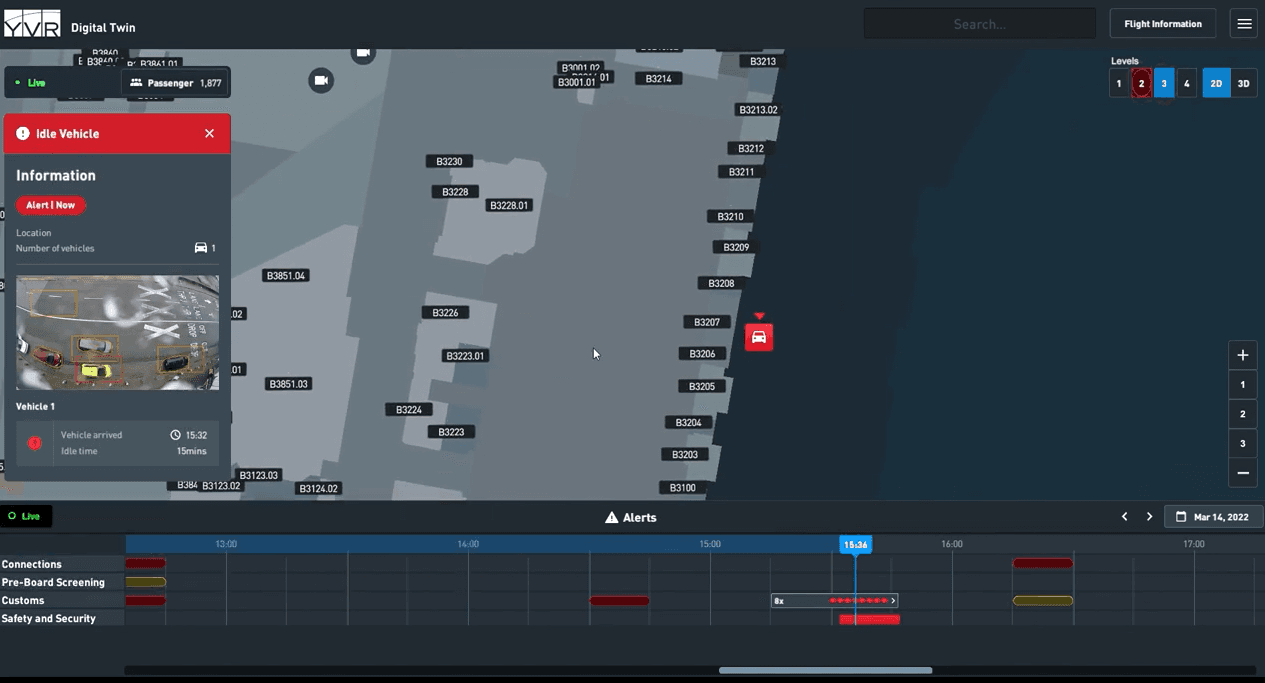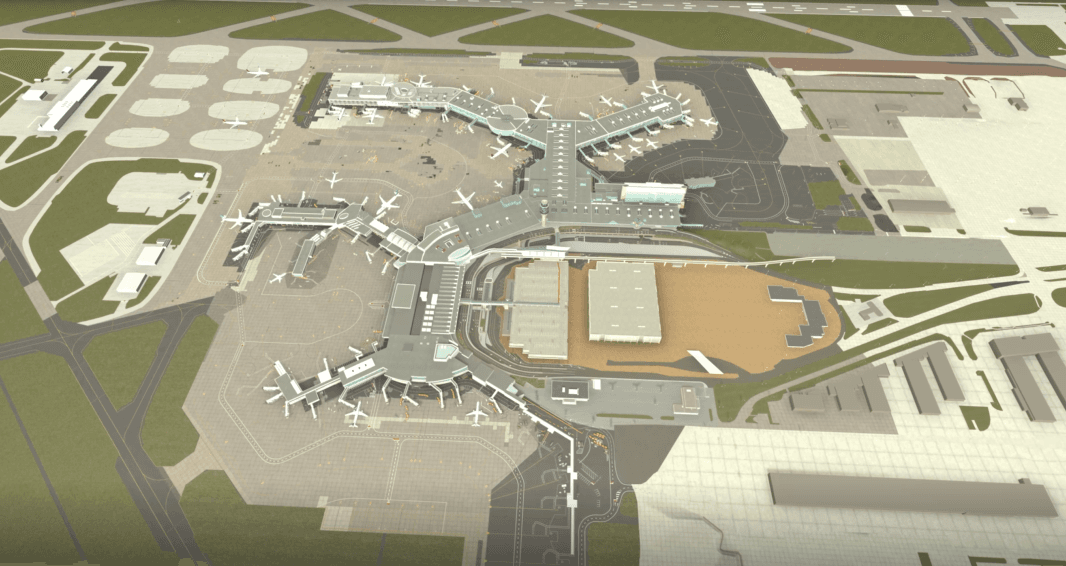
Der internationale Flughafen Vancouver (YVR) ist ein vielfältiges globales Drehkreuz, das Menschen, Fracht, Daten und Ideen miteinander verbindet. YVR verfügt über ein eigenes Innovationszentrum, das die Bedeutung der digitalen Transformation für einen Flughafen neu überdenkt, indem es neue Prozesse und Innovationen, einschließlich der 3D-Technologie in Echtzeit, testet und erprobt. Die Vision des Flughafens, das Erlebnis für die Passagiere neu zu gestalten, veranlasste YVR, Unity zu nutzen, um den ersten digitalen 3D-Zwilling eines Flughafens in Nordamerika in Echtzeit zu erstellen.
Erstellung einer interaktiven Darstellung des Flugplatzes und des Terminals, verbunden mit Echtzeit-Betriebsdaten
Bewältigung von Herausforderungen wie Wartung, Nachhaltigkeit und Sicherheit bei gleichzeitiger Vermeidung von Betriebsunterbrechungen
Unity
200 Mitarbeiter des Flughafenbetriebs nutzen die Runtime-Anwendung
Operatives Situationsbewusstsein für über 600 Flughafenmitarbeiter
Musqueam-Territorium/Richmond, Britisch-Kolumbien, Kanada

Der digitale Zwilling von YVR wurde als "people-first"-Technologie entwickelt, die darauf abzielt, ein ansprechendes und informatives Erlebnis für die Mitarbeiter vor Ort zu schaffen, und nutzt historische und Echtzeitdaten, um eine datengestützte Entscheidungsfindung zu ermöglichen, Prozesse zu rationalisieren und die Zusammenarbeit im gesamten Flughafenbetrieb zu verbessern.


YVR ist führend in der Innovation, um die gestiegenen Erwartungen der Passagiere und der Gesellschaft in einer Zeit zu erfüllen, in der sich Reisen und Luftfahrt verändern.
Ihr digitaler Zwilling soll aus betrieblicher Sicht ein Katalysator für Veränderungen werden und gleichzeitig die ehrgeizigen Klima- und Versöhnungsziele des Flughafens unterstützen. Der Flughafen arbeitet mit dem gesamten Ökosystem der Branche zusammen, um das Gesamtreiseerlebnis für die Passagiere zu verbessern.
"Ein Flughafen ist eine Stadt, eine Baustelle, ein Einkaufszentrum", sagt Lynette DuJohn, CIO der Flughafenbehörde von Vancouver. "Aber sie befindet sich auch in einer sehr kontrollierten Umgebung und ist daher die perfekte Plattform für Innovationen.
YVR nutzte Unity, um mit der digitalen Transformation seines Terminals und Flugplatzes zu beginnen. Der Flughafen machte sich seine umfangreichen Daten und Systeme zunutze, um einen dynamischen, vernetzten digitalen Zwilling zu schaffen.
Dieses System verbessert das Verständnis komplexer operativer Systeme, ermöglicht bessere Entscheidungen und erlaubt es dem Team, hypothetische Szenarien zu Klimaauswirkungen, Sicherheit und mehr zu untersuchen.
"Ich bin davon überzeugt, dass der digitale Zwilling einen absoluten Wendepunkt in der Flughafenbranche darstellt und einen wichtigen Beitrag zu unserer Strategie leisten wird", so DuJohn.

Das Team begann mit der Erfassung von Bilddaten der Innen- und Außenbereiche des Flugplatzes und des YVR-Terminals mit Hilfe von High-Fidelity-Kameras und Lidar-Sensoren, die an Flug- und Bodentransportmitteln angebracht sind.
Die vorhandenen CAD-Zeichnungen von YVR wurden dann manuell in Revit konvertiert und in Unity importiert. Dies ermöglichte es dem Team, Daten zu ergänzen und die in der Entwurfsphase ermittelten wichtigsten Anwendungsfälle zu entwickeln.
Während das 3D-Modellierungsunternehmen GeoSims Cities das 3D-Modell des Flughafenterminals und des Flugplatzes verfeinerte, stellte YVR sicher, dass der digitale Zwilling intuitiv, sicher und für die Mitarbeiter von YVR einfach zu bedienen ist.
"Wir bei YVR wollen, dass unsere Mitarbeiter die Mittel haben, die sie brauchen, um in einem dynamischen Umfeld erfolgreich zu sein", sagt DuJohn. "Die Technologie des digitalen Zwillings löst viele flughafenbezogene Herausforderungen und bietet unseren Mitarbeitern eine unglaubliche Ebene des Situationsbewusstseins."
"Unsere Entwickler haben [ursprünglich] eine andere Plattform verwendet, aber die Umstellung auf Unity war ganz einfach. Sie lieben es wirklich", sagt DuJohn.

YVR hat ein Tool in den digitalen Zwilling integriert, das das Situationsbewusstsein für den Betrieb und die Sicherheit, den ursprünglichen Schwerpunkt des Projekts, unterstützt.
Das Situationsbewusstseinstool bietet eine Vogelperspektive auf das YVR-Terminal und fasst Informationen in Echtzeit zusammen. Außerdem sind Warnmeldungen in das Tool integriert, um den Endnutzer über Datenanomalien oder potenzielle Sicherheitsprobleme zu informieren.
YVR hat seine Kameras zum Beispiel so programmiert, dass sie erkennen, wenn ein Fahrzeug über einen längeren Zeitraum am Rand des Terminals geparkt wurde. Sobald das Signal erkannt wird, wird eine Warnung generiert, und der Benutzer kann auf das Signal klicken, um eine Live-Übertragung der Situation zu sehen. Sie können dann mit den Betriebs- und Sicherheitsteams zusammenarbeiten, um das Problem zu beheben.

Als größtes Gebäude in Britisch-Kolumbien muss YVR eine Reihe von betrieblichen Überlegungen anstellen, um kontinuierliche Effizienz zu gewährleisten, einschließlich Wartung, Sicherheit und Notfallplanung. Zwei neue Tools wurden in den digitalen Zwilling von YVR integriert, das Maintenance and Test Equipment (MTE) und der 3D Explorer, um sicherzustellen, dass diese Teams alles haben, was sie für ihre Arbeit brauchen.
Das MTE-Tool arbeitet mit dem bestehenden Wartungssystem von YVR zusammen und ermöglicht es dem Team, von einem mobilen Gerät aus auf offene Arbeitsaufträge zuzugreifen, sie zu aktualisieren und einzusehen.
"Das Team liebt dieses Tool und war maßgeblich an seiner Entwicklung beteiligt", sagt DuJohn. "Die Benutzer können sich die in der Nähe befindlichen Arbeitsaufträge auf der Karte anzeigen lassen, so dass sie Verzögerungen vermeiden und effizienter arbeiten können.
Auf der Grundlage von CAD-Zeichnungen und Scans modelliert das 3D-Explorer-Tool das Innere und Äußere des Terminals von YVR. Das YVR-Team kann nun den Flughafen von jedem beliebigen Standpunkt aus erkunden und Simulationen durchführen, z. B. zur Vorbereitung auf Katastrophen und zum besseren Verständnis der besten Möglichkeiten für eine sichere Evakuierung.
YVR hat mit seiner Verpflichtung, bis 2030 keine Kohlendioxidemissionen mehr zu verursachen, eine Vorreiterrolle in Sachen Klimaschutz übernommen. Zur Unterstützung dieses ehrgeizigen Ziels setzt der Flughafen seinen digitalen Zwilling ein, um die Flugzeugbewegungen auf dem Flugfeld zu modellieren und so die Treibhausgasemissionen zu reduzieren. Dies ist Teil der Initiative von YVR, der grünste Flughafen der Welt zu werden.
Derzeit sind mehr als 95 % der Emissionen auf Sea Island auf Flugbewegungen, Verkehr und Gebäude außerhalb des Flughafens zurückzuführen. Mit seinem digitalen Zwilling kann YVR die Treibhausgasemissionen in Echtzeit messen, um seine eigenen Netto-Null-Ziele und die seiner Speditionspartner zu unterstützen.
"Wir werden 2030 netto null sein und nicht erst 2050, also müssen wir unseren Plan um 20 Jahre vorverlegen", sagt DuJohn. "Wenn wir in der Lage sind, all diese Szenarien zu modellieren, wird uns das sehr helfen, Effizienz und Klima wirklich in den Griff zu bekommen.
Darüber hinaus fördert der Flughafen im Rahmen von YVRs Weg zur Versöhnung die Beteiligung und Führungsrolle indigener Bevölkerungsgruppen in den Bereichen Technik und Innovation, indem er ein Unity-Schulungsprogramm für Musqueam-Schüler anbietet. Das Ergebnis des Kurses ist, dass die Musqueam-Teilnehmer ein 3D-Grundlagenzertifikat erhalten, das sie für zukünftige berufliche Positionen in der Digital Twins- und Spieleindustrie qualifiziert.

Entdecken Sie, wie Sie die Digital Twins-Lösungen von Unity nutzen können, um das volle Potenzial Ihrer Daten für eine bessere Entscheidungsfindung zu erschließen.